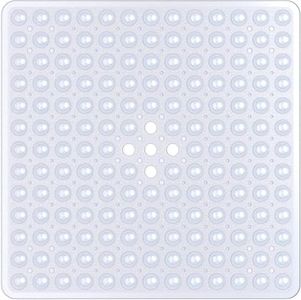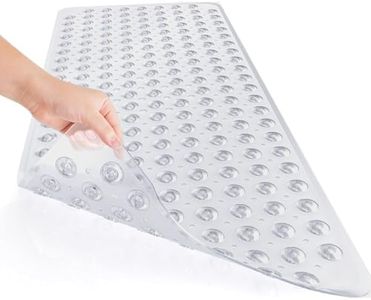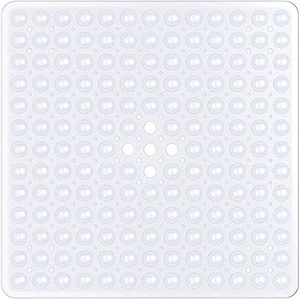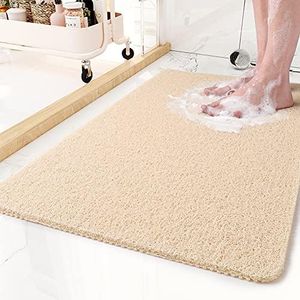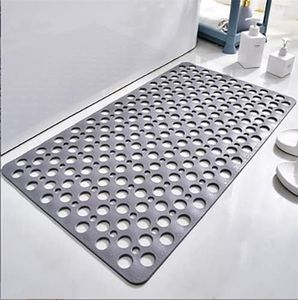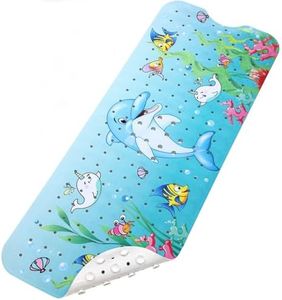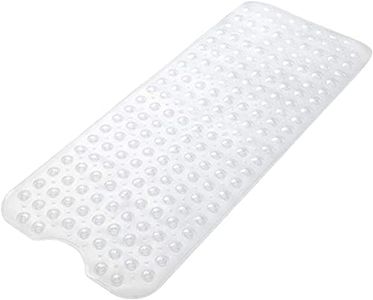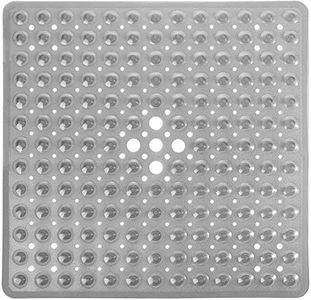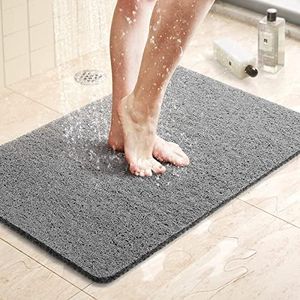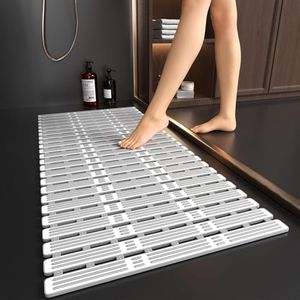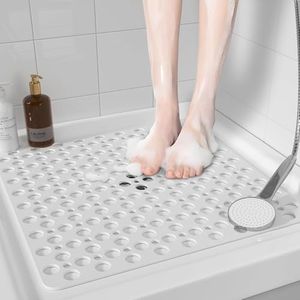We Use CookiesWe use cookies to enhance the security, performance,
functionality and for analytical and promotional activities. By continuing to browse this site you
are agreeing to our privacy policy
10 Best Mold Resistant Bath Mats
From leading brands and best sellers available on the web.Recommended lists
Buying Guide for the Best Mold Resistant Bath Mats
Choosing a mold-resistant bath mat is all about finding a product that stays fresh and clean with minimal effort. The main goal is to reduce the chances of mold and mildew growth, which can cause unpleasant odors, stains, and even health concerns. Focus on features that help water drain or evaporate quickly, as these reduce the moisture where mold tends to thrive. Additionally, you'll want a mat that feels comfortable underfoot and stays put on the bathroom floor for safety. Let's explore the most important specifications you should consider when selecting a mold-resistant bath mat.MaterialMaterial refers to what the bath mat is made from, and this plays a key role in how well it resists mold. Common materials include rubber, teak wood, bamboo, microfiber, and certain synthetic fibers. Rubber, teak, and bamboo are naturally resistant to water and dry quickly, making them less likely to harbor mold. Microfiber mats are soft and absorbent but should be quick-drying and specifically treated for mold resistance. When choosing the material, consider whether you prefer a softer feel for comfort, or a firmer surface that dries faster and is easier to keep mold-free. If your bathroom stays damp for long periods, opt for naturally water-resistant materials like rubber or bamboo. For regular cleaning and quick drying between uses, treated fabrics may also work well.
Drying SpeedDrying speed describes how quickly the bath mat sheds moisture. The faster a mat dries, the less likely mold will develop. Drying speed can be influenced by the mat's thickness, weave, and material. Thin mats, mats with open weaves, or those made from water-shedding materials dry fastest, while thick, plush mats can hold dampness longer. If you have a well-ventilated bathroom or can hang your mat after use, a slower drying time may not be a big issue. However, in humid or low-airflow environments, prioritize mats that are designed to dry rapidly.
Non-Slip FeaturesNon-slip features are design elements that help the bath mat grip the floor and prevent slips. These usually include suction cups, textured bottoms, or non-skid coatings. This is especially important in wet environments like bathrooms for safety. When picking a mat, check to see if it has a reliable non-slip backing, particularly if you have smooth tiles or children and elderly using the bathroom. A mat that stays put also allows for better airflow beneath, which can help the mat dry out and discourage mold.
Ease of CleaningEase of cleaning determines how simple it is to keep your bath mat fresh and free from mold. Some mats can be tossed into the washing machine, while others might need to be scrubbed or wiped down. Machine-washable mats offer the most convenience for regular thorough cleaning. For wood or bamboo mats, a quick wipe or rinse is usually sufficient. When picking a mat, think about how often you'll be cleaning it and what method suits your lifestyle best; easier cleaning generally means a cleaner, healthier mat.
Water Drainage DesignWater drainage design refers to features like holes, channels, or slats that allow water to flow off and under the mat rather than pooling. Efficient drainage keeps the mat drier and minimizes mold risk. Mats with lots of open spaces or slatted designs allow water to evaporate swiftly, while solid mats might hold more moisture. If your mat will sit on a surface that stays wet (like a shower floor), prioritize models designed for excellent drainage.
